Lucretia Mott Worksheets
Do you want to save dozens of hours in time? Get your evenings and weekends back? Be able to teach about Lucretia Mott to your students?
Our worksheet bundle includes a fact file and printable worksheets and student activities. Perfect for both the classroom and homeschooling!
Resource Examples
Click any of the example images below to view a larger version.
Fact File
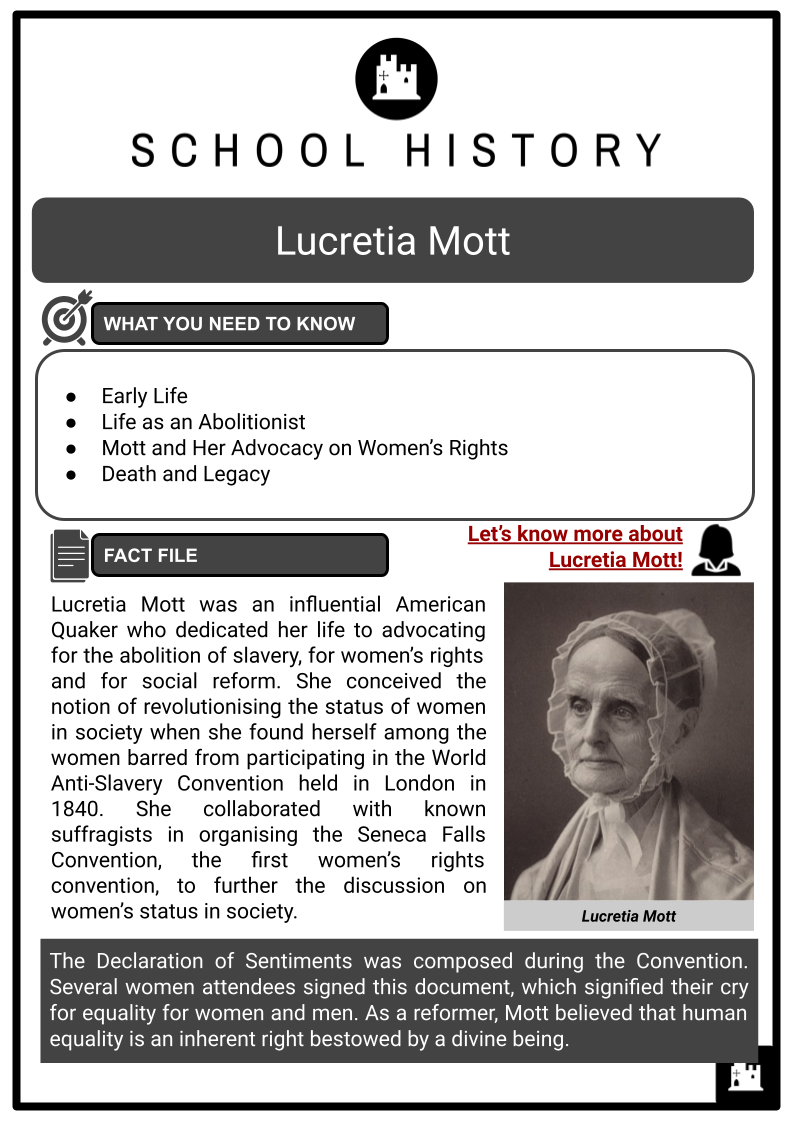
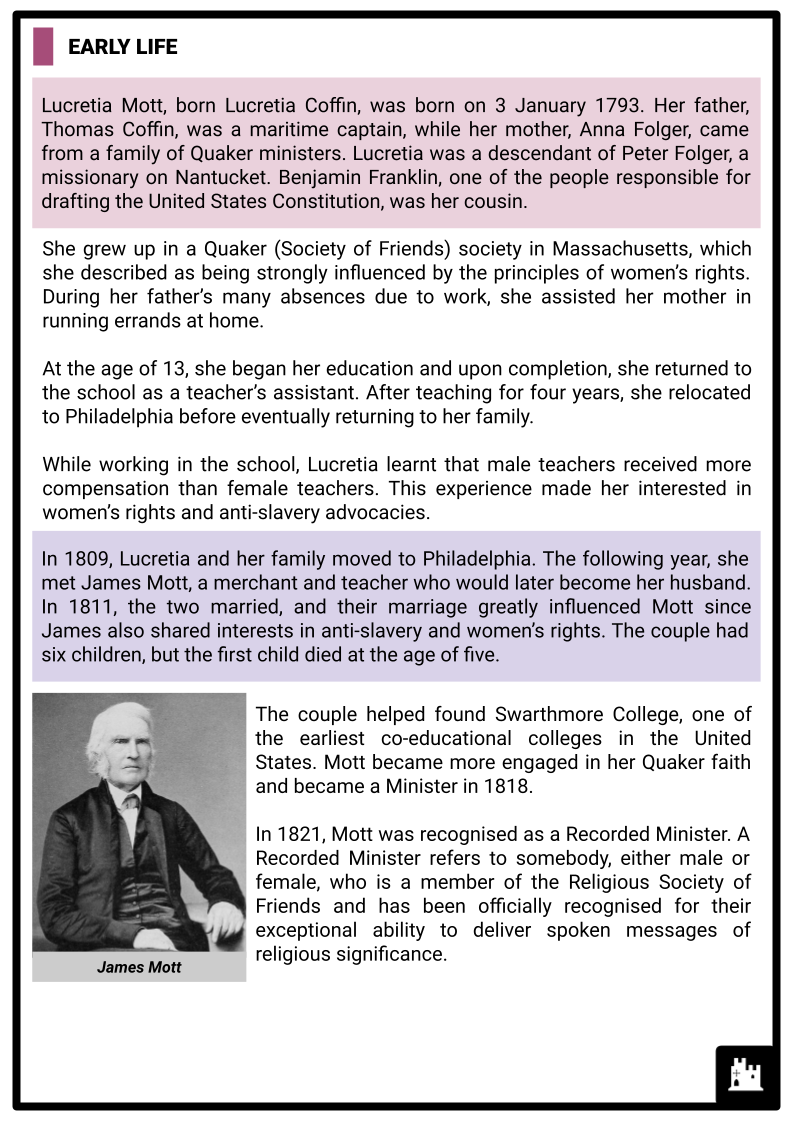
Student Activities
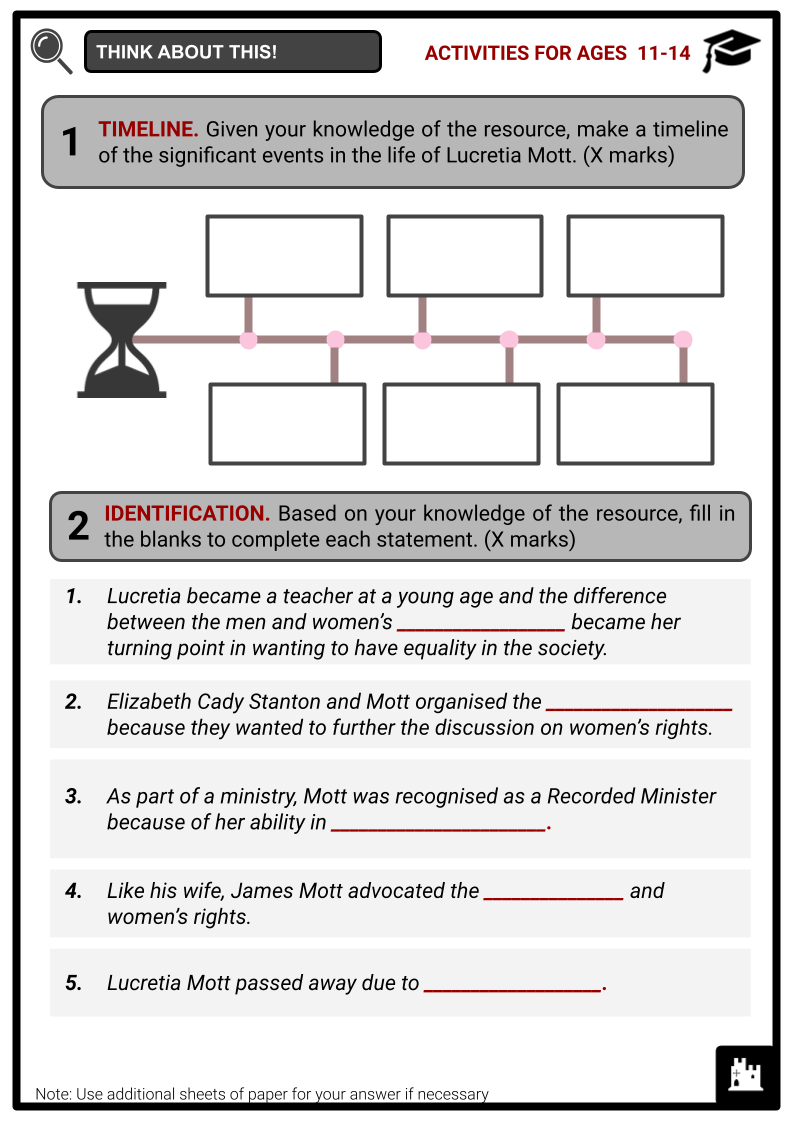
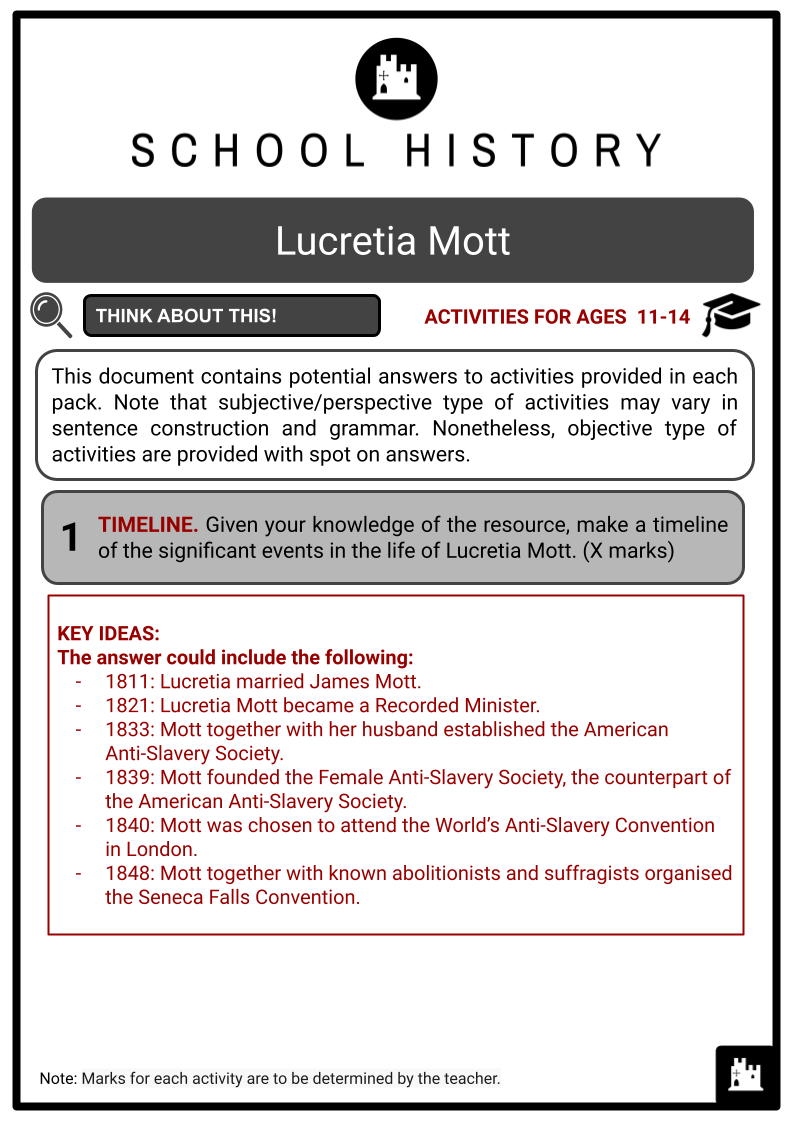
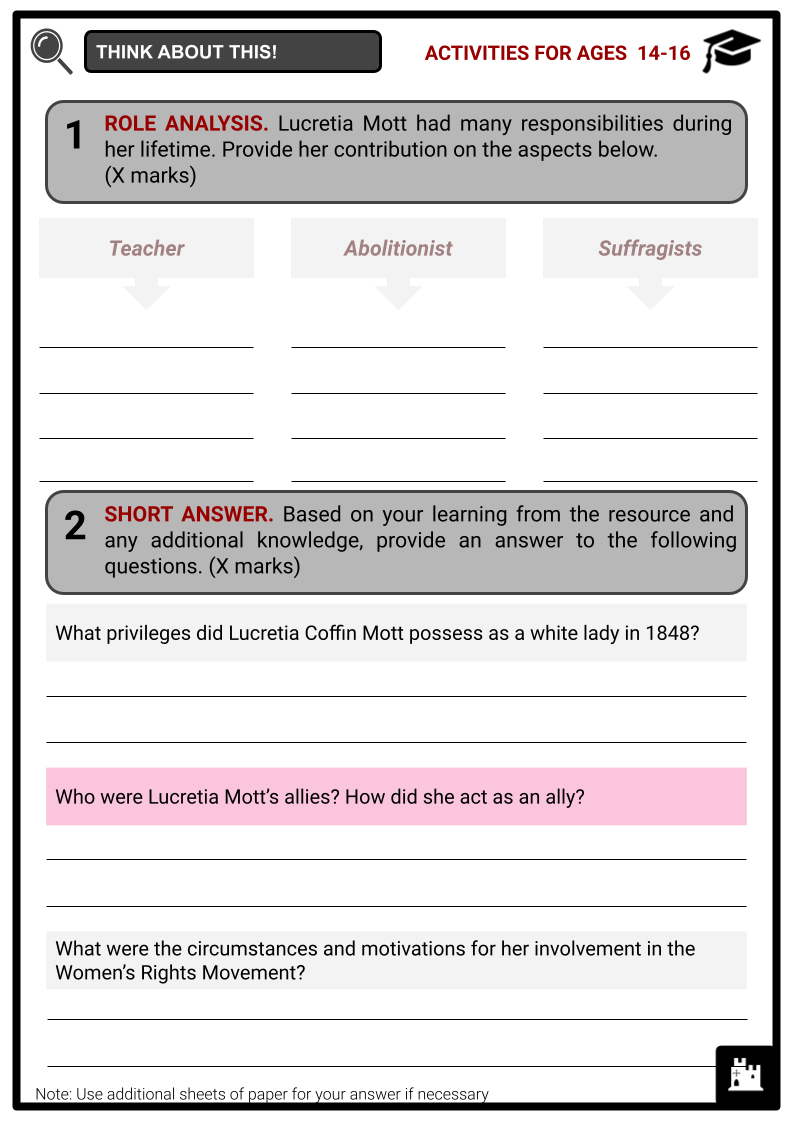
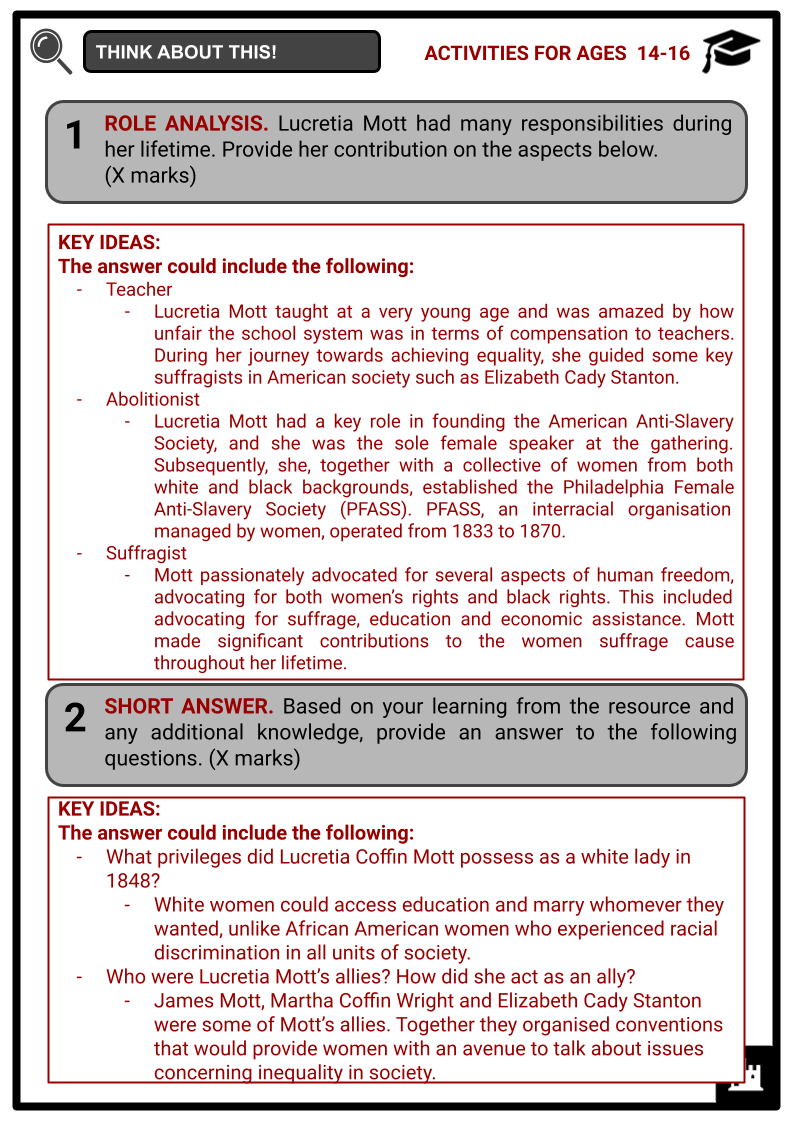
Summary
- Early Life
- Life as an Abolitionist
- Mott and Her Advocacy on Women’s Rights
- Death and Legacy
Key Facts And Information
Let’s know more about Lucretia Mott!
Lucretia Mott was an influential American Quaker who dedicated her life to advocating for the abolition of slavery, for women’s rights and for social reform. She conceived the notion of revolutionising the status of women in society when she found herself among the women barred from participating in the World Anti-Slavery Convention held in London in 1840. She collaborated with known suffragists in organising the Seneca Falls Convention, the first women’s rights convention, to further the discussion on women’s status in society.
The Declaration of Sentiments was composed during the Convention. Several women attendees signed this document, which signified their cry for equality for women and men. As a reformer, Mott believed that human equality is an inherent right bestowed by a divine being.
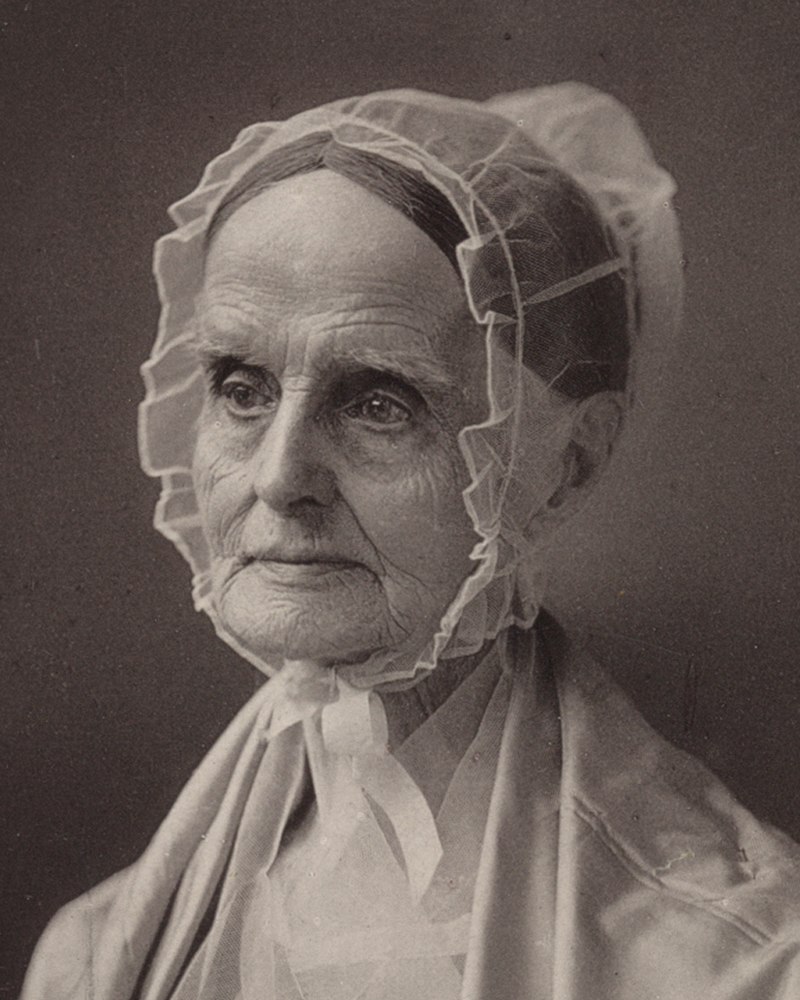
EARLY LIFE
- Lucretia Mott, born Lucretia Coffin, was born on 3 January 1793. Her father, Thomas Coffin, was a maritime captain, while her mother, Anna Folger, came from a family of Quaker ministers. Lucretia was a descendant of Peter Folger, a missionary on Nantucket. Benjamin Franklin, one of the people responsible for drafting the United States Constitution, was her cousin.
- She grew up in a Quaker (Society of Friends) society in Massachusetts, which she described as being strongly influenced by the principles of women’s rights. During her father’s many absences due to work, she assisted her mother in running errands at home.
- At the age of 13, she began her education and upon completion, she returned to the school as a teacher’s assistant. After teaching for four years, she relocated to Philadelphia before eventually returning to her family.
- While working in the school, Lucretia learnt that male teachers received more compensation than female teachers. This experience made her interested in women’s rights and anti-slavery advocacies.
- In 1809, Lucretia and her family moved to Philadelphia. The following year, she met James Mott, a merchant and teacher who would later become her husband. In 1811, the two married, and their marriage greatly influenced Mott since James also shared interests in anti-slavery and women’s rights. The couple had six children, but the first child died at the age of five.
- The couple helped found Swarthmore College, one of the earliest co-educational colleges in the United States. Mott became more engaged in her Quaker faith and became a Minister in 1818.
- In 1821, Mott was recognised as a Recorded Minister. A Recorded Minister refers to somebody, either male or female, who is a member of the Religious Society of Friends and has been officially recognised for their exceptional ability to deliver spoken messages of religious significance.
- Mott’s sermons encompassed her advocacy for free fruit and other views opposing slavery. Her sermons focused on the Quaker concept of the inner light, which refers to the belief in the presence of the Divine within each person.
- This idea was promoted by Elias Hicks, a Quaker preacher who travelled to spread his teachings.
- She and her husband aligned themselves with Hicks during the Great Separation of 1827 in opposition to the more evangelical and orthodox faction.
LIFE AS AN ABOLITIONIST
- Mott, like many Hicksite Quakers, shared the belief that slavery was a morally wrong practice that should be actively resisted. Because of this belief, they declined to use cotton fabric, cane sugar and other commodities manufactured via the toil of enslaved individuals. Using her ministry expertise, she began delivering public speeches advocating for the abolition of slavery.
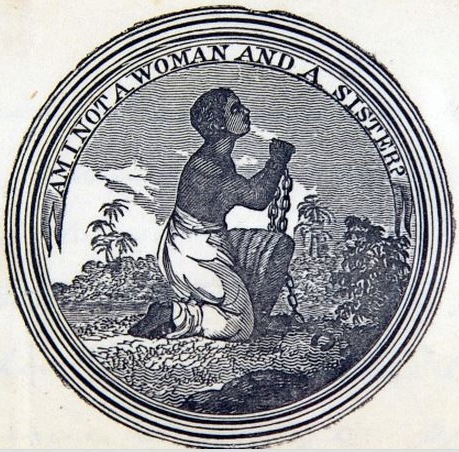
- In 1833, she and her husband played a significant role in establishing the American Anti-Slavery Society. Despite the organisation being mostly for men, she was invited to attend its inaugural Convention as a guest.
- Mott established and served as the leader of the Female Anti-Slavery Society, which merged with the male organisation in 1839. Mott, in addition to being a founding member of the Pennsylvania Anti-Slavery Society, also played a crucial role in establishing the Philadelphia Female Anti-Slavery Society in 1833 alongside other women, both white and black.
- From 1837 to 1839, Mott attended the Anti-Slavery Conventions of American Women. The Convention in 1837 was the first gathering of women who advocated. Despite social backlash and sickness, Mott continued her advocacy as an abolitionist. She opened her home to fugitive enslaved people and provided financial support to charities that supported anti-slavery. In 1840, she was chosen as a representative to attend the World’s Anti-Slavery Convention in London. However, she discovered that the Convention was dominated by anti-slavery groups who were against women participating in public speaking and taking action.
- During the Convention, Elizabeth Cady Stanton, a known suffragist, attributed the concept of organising a large gathering to discuss women’s rights to her discussions with Mott, which took place when they were seated in the segregated women’s section.
MOTT AND HER ADVOCACY ON WOMEN’S RIGHTS
- It was not until 1848 that Mott, Stanton and others, notably Mott’s sister, Martha Coffin Wright, were able to organise a women’s rights convention at Seneca Falls. The Declaration of Sentiments, authored mainly by Stanton and Mott, was a conscious emulation of the Declaration of Independence, asserting, ‘We firmly believe that all men and women are inherently equal.’
- Following the Seneca Falls Convention, Mott persisted in her nationwide speaking engagements, advocating for women’s rights. In 1849, she participated in a lecture delivered by an American poet and lawyer, Richard Henry Dana, Sr., expressing disapproval towards the emerging women’s rights movement. As a proficient orator, Mott believed that delivering a counter argument speech would be the most effective reaction.
- She employed logical reasoning and provided specific instances of women in the Bible who are portrayed as equals in the sacred texts. By citing examples of prominent female figures in the Bible who were respected as wise advisers and influential spiritual guides, she presented a compelling argument in favour of women preachers.
- Mott discussed the valour displayed by women who had fought in battles in the past and the bravery exhibited by contemporary individuals who were assisting the impoverished and the ailing.
- She underscored the inequity of laws that subjected women to the status of their husbands’ property, effectively nullifying their legal autonomy upon marriage. Her lecture, Discourse on Women, was characterised by its calm, reasonable and ultimately compelling nature, which led to its publication as a pamphlet in 1850.
- Excerpts were used in newspapers, specifically magazines, and sermons. They are regarded as a fundamental component of the suffrage struggle.
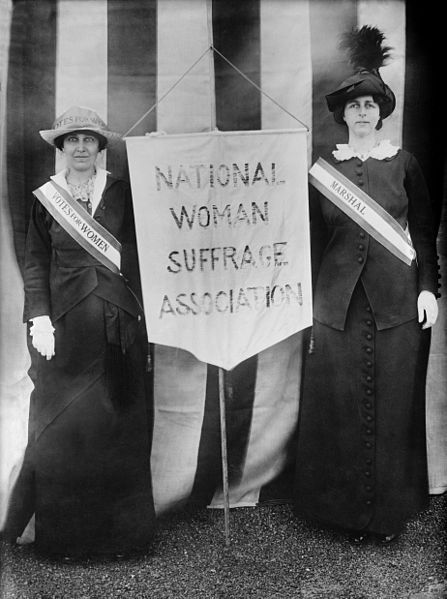
- Mott had a crucial role in organising a convention for women’s rights in Rochester, New York, in 1850. The Convention took place at the Unitarian Church and had a broader focus.
- Mott’s theological beliefs were shaped by Unitarians such as Theodore Parker and William Ellery Channing and early Quakers like William Penn.
- She embraced the belief that the kingdom of God resides within humanity and was part of the cohort of religious progressives who established the Free Religious Association.
- The American Equal Rights Association was established in 1866, following the conclusion of the Civil War, with Mott assuming the role of the inaugural president of the integrated organisation. In the subsequent year, Mott and Stanton engaged in activism in Kansas, where the issue of granting voting rights to both African Americans and women was to be determined through a popular vote.
- The Equal Rights Association, comprising male and female members, supported male suffrage. Stanton and Anthony established the National Woman’s Suffrage Association exclusively for women.
DEATH AND LEGACY
- At 87, Mott passed away on 11 November 1880 at her residence in Cheltenham, Pennsylvania, due to pneumonia. Despite not witnessing the day when women obtained the right to vote under the 19th Amendment, Mott is acknowledged for sparking the women’s rights movement and guiding Stanton, who carried on Mott’s legacy after her passing.
- Mott is known as a prominent feminist advocate who vigorously campaigned for equal voting, education and economic rights for individuals who were marginalised and deprived of their rights. Throughout her life, she wrote several pieces that influenced other women to continue the fight for women’s rights. Some of her writings were:
- Memo on Self: A compilation of autobiographical material from Mott.
- Likeness to Christ: Mott’s sermon of 30 September 1849.
- On John Brown: An excerpt from a talk by Mott on the abolitionist John Brown: a pacifist need not be passivist.
Frequently Asked Questions
- Who was Lucretia Mott?
Lucretia Mott was an American Quaker, abolitionist, women's rights activist, and social reformer who played a significant role in the 19th-century movements for abolition and women's rights in the United States.
- What were Lucretia Mott's main contributions to the abolitionist movement?
Lucretia Mott was an outspoken advocate for the abolition of slavery. She co-founded the Philadelphia Female Anti-Slavery Society in 1833 and organised the first Anti-Slavery Convention of American Women in 1837.
- What role did Lucretia Mott play in the women's rights movement?
Lucretia Mott played a central role in the women's rights movement. She was one of the organisers of the Seneca Falls Convention in 1848, where she delivered a powerful speech advocating for women's rights, including suffrage.
